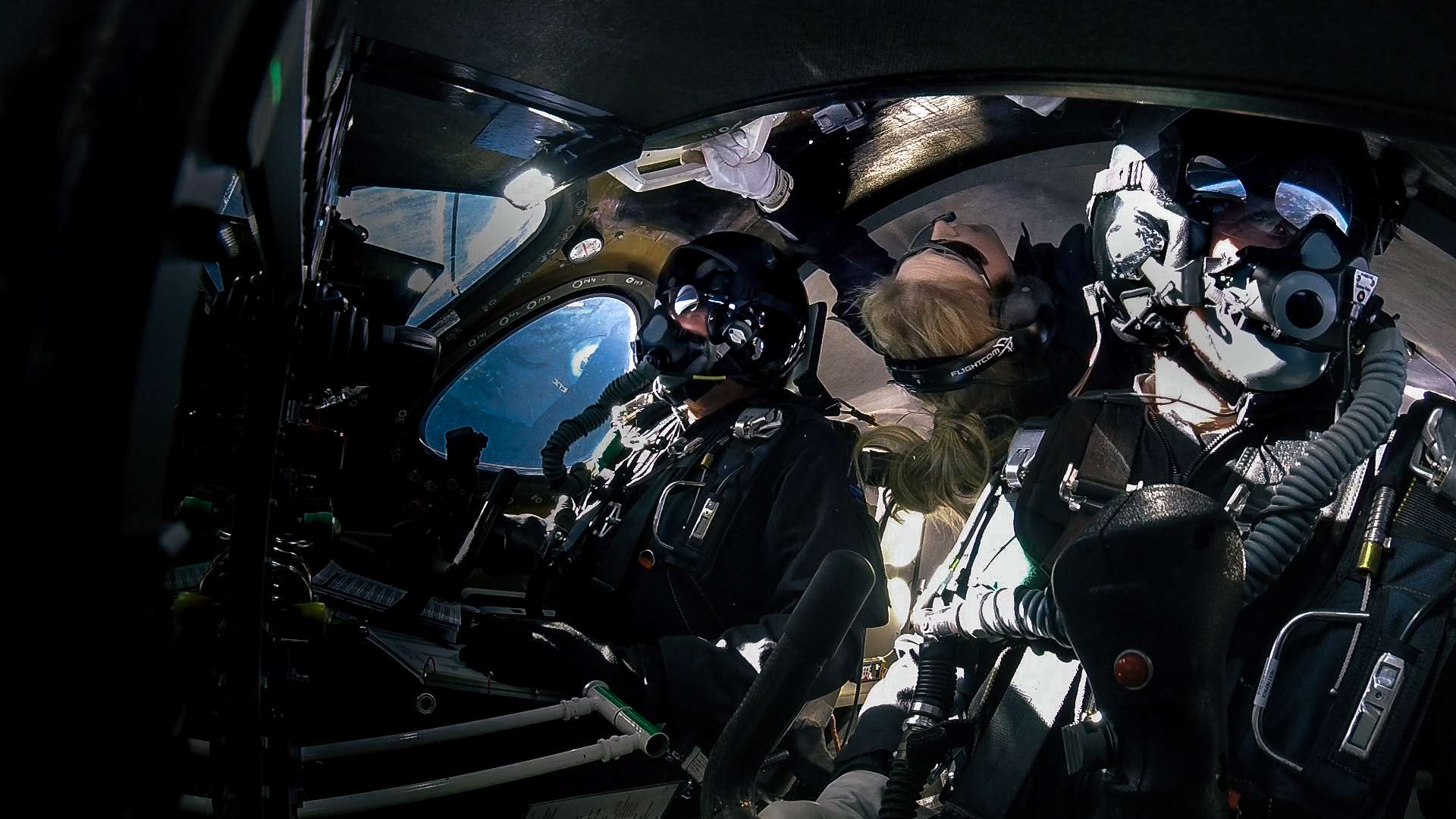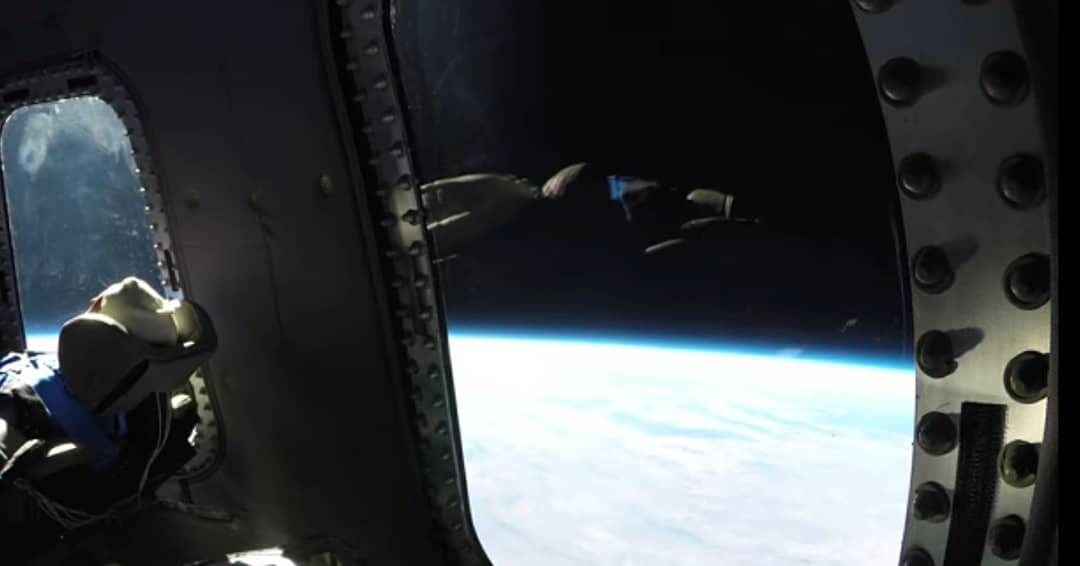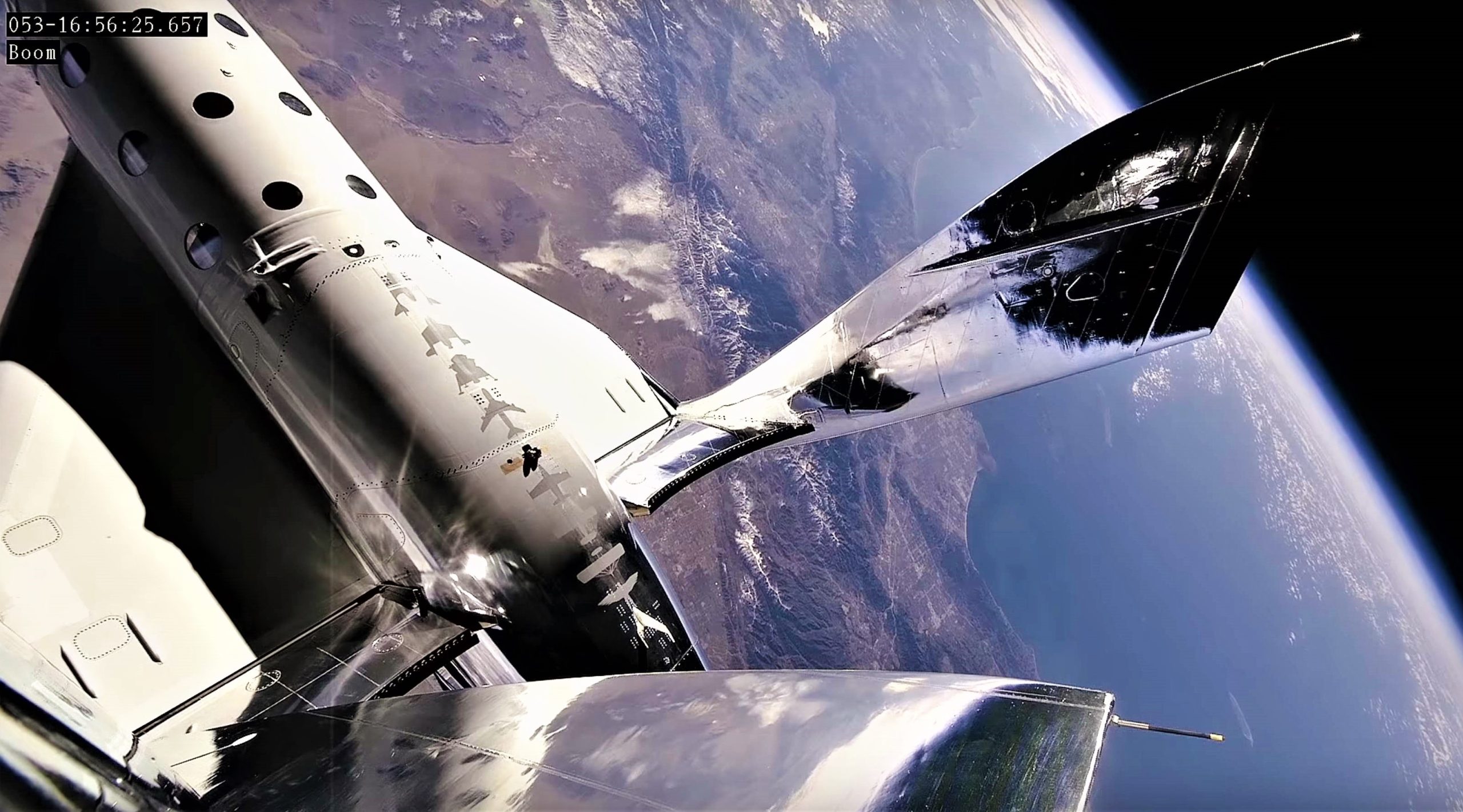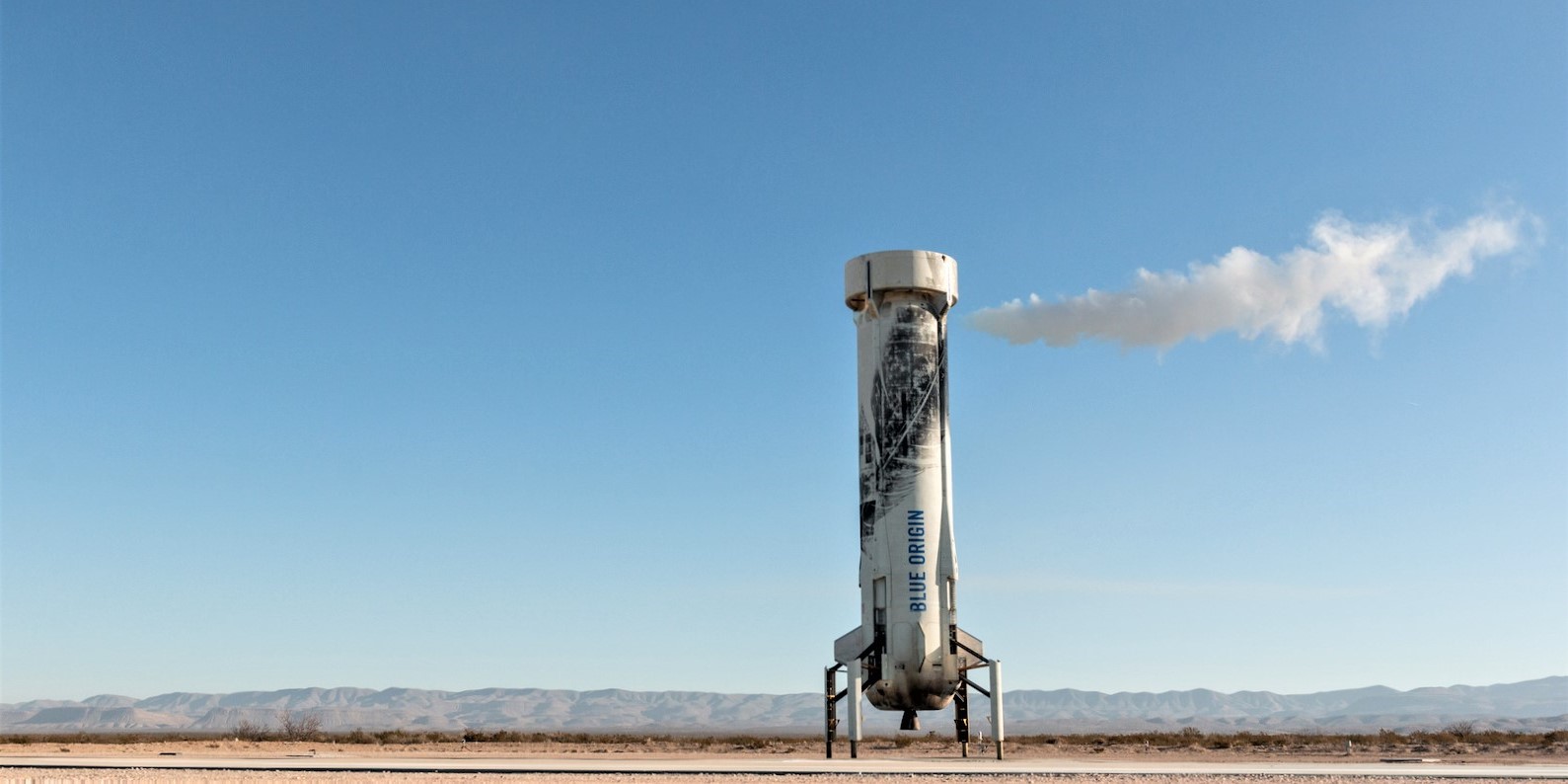News
DeepSpace: Virgin Galactic and Blue Origin banter about the fine print of suborbital tourism
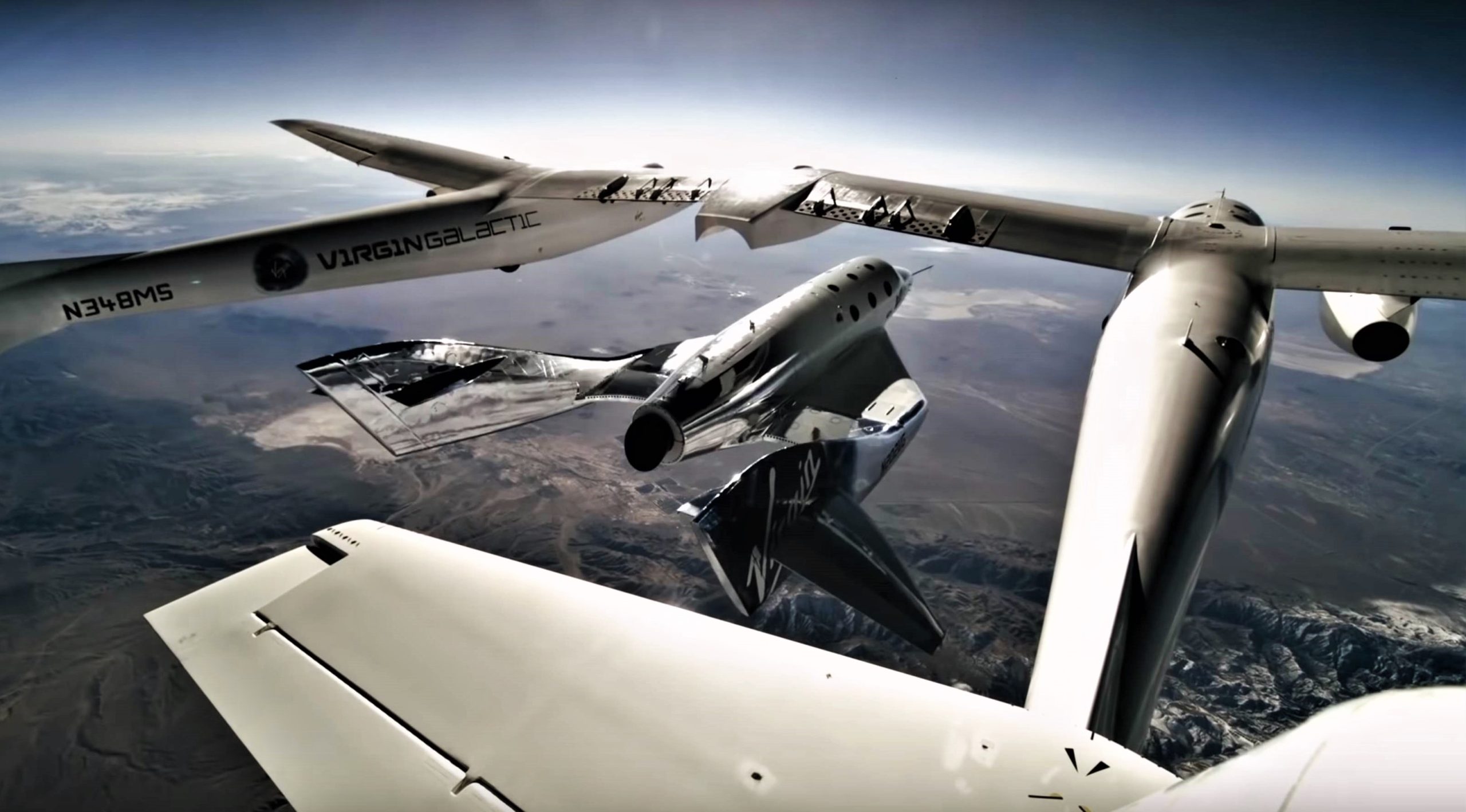
Welcome to the sixth edition of our new newsletter, DeepSpace! Each Tuesday, I’ll be taking a deep-dive into the most exciting developments in commercial space, from satellites and rockets to everything in between. If you’d like to receive DeepSpace and all of our newsletters and membership benefits,
Just shy of two months into 2019, the new year has been marked by a distinct focus on human spaceflight. Most of that focus has centered (as it should) on the relatively imminent launch debut of both SpaceX’s Crew Dragon and Boeing’s Starliner, crewed spacecraft designed and built to carry astronauts into orbit for NASA.
However, beyond SpaceX and Boeing, a considerable amount of noise is being made about the labors and relative progress of companies like Blue Origin and Virgin Galactic, both primarily focused on building a suborbital tourism market with their New Shepard and SpaceShipTwo launch vehicles. Coming as no surprise from companies aiming to create a sustainable market for a very expensive consumer product, both products have been dragged through a torturous maze of marketing hype in a process that has not really done the serious endeavor of human spaceflight any favors.
The Shepard and the Ship
- Virgin Galactic’s launch vehicle provider The Spaceship Company has been working to develop a suborbital platform to launch humans since the early 2000s, incorporated after billionaire Paul Allen funded a group of companies that ultimately won the Ansari X Prize in 2004.
- The Virgin/TSC approach involves a carrier aircraft (Known as White Knight Two) and a much smaller rocket plane (SpaceShipTwo) that is carried up to ~30,000 feet (9 km) before dropping and igniting its engine.
- SpaceShipTwo is meant to reach a maximum altitude of around 300,000 feet (~90 km) at a top speed of roughly Mach 3 (1000 m/s, 2200 mph) before gliding back to land on the same runway.
- In 2014, a combination of bad aeronautical design and pilot error triggered the in-flight failure of the first SpaceShipTwo, killing one of its two pilots. A member of the NTSB board that investigated the failure stated that Scale Composites (one of TSC’s parent companies) “put all their eggs in the basket of the pilots [flying the vehicle] correctly.”
- In a February 2019 video, Virgin Galactic CEO George Whitesides noted that “many aircraft are moving to being less piloted over time [but] our vehicle really is piloted to space.”
- SpaceShipTwo most recently launched on February 22nd.
- Blue Origin has yet to launch an actual human on New Shepard, a small, reusable single-stage rocket designed to loft a separate passenger capsule to approximately 100 km (330,000 ft).
- New Shepard has conducted ten launches since its 2015 debut, most of which saw the crew capsule and booster approximately reach that nominal 100 km apogee and nine of which concluded with a successful landing of the rocket’s booster.
- Capable of carrying up to six passengers, the Crew Capsule features a built-in abort motor that has been successfully tested, as well as a parachute system for a relatively soft landing at end-of-mission.


“Spacecraft” and “astronauts”
- Aside from the generally impressive technology itself and the undeniable challenges and risks of launch humans on fueled rockets, both Blue Origin’s New Shepard and Virgin Galactic’s SpaceShipTwo exist – albeit with different weights – to cater to a new market, suborbital or “space” tourism.
- While NASA is taking advantage of the opportunities to test small experiments with both vehicles as a partial platform, the real goal of both vehicles is to routinely launch paying customers.
- While Blue Origin has yet to announce ticket pricing, Virgin Galactic has priced their offering at $250,000 per person. In both cases, the end result will likely be a six-figure sum in return for an experience that should last no more than 10-60 minutes from start to finish, excluding buildup from screening and whatever training is deemed necessary.
- In other words, short of cases involving charity, tickets on New Shepard and SpaceShipTwo will almost indefinitely be reserved for less than 1% of humanity, those with income around $1M or more per year. This is by no means a bad thing and is, in fact, a proven first or second step in the direction of democratizing exotic or expensive technologies like air travel, computers, and even electric cars (namely Teslas).
- However, both companies are laser-focused on branding their vehicles as spacecraft and their passengers as astronauts, with Virgin Galactic being the worst offender in this regard.
- Aside from literally calling its 600+ prospective customers “Future Astronauts”, Virgin Galactic uses every chance it gets to hammer home its claim that SpaceShipTwo is a commercial spacecraft and its pilots true licensed, “wing”-ed astronauts.
- While passengers are not eligible for official FAA ‘astronauts’ wings’, it appears that Virgin will continue to market its passenger experience as one where customers will get to ‘travel to space’ and more or less become astronauts.
- Blue Origin describes its commercial offering as a “reusable suborbital rocket system designed to take astronauts and research payloads past the Kármán line – the internationally recognized boundary of space.”
- Both Blue and Virgin flights offer about ~4 minutes of weighlessness between launch and landing.
- Virgin Galactic Makes Space for Second Time in Ten Weeks with Three On Board
- For context, Alan Shepard – the US test pilot and namesake of New Shepard – was launched to an altitude of almost 190 km (120 mi) for what was recognized as the first US “spaceflight” and spent something like 5-10 minutes in microgravity and above the Karman Line (100 km).
- Used as a rough measure for a sort of fixed, arbitrary boundary between “Earth” and “Space”, reasonable arguments have been made in the last few years that the 100 km Karman Line could more accurately be placed around 70-90 km, in which case Virgin Galactic might actually be technically correct when saying that SpaceShipTwo and its passengers are traveling to space.
- Fewer than 570 humans in all of history have visited space (> 100 km), around 99.5% of which were astronauts that reached orbit. To call pilots of a spaceplane as distinctly suborbital as SpaceShipOne “astronauts” is palatable, particularly given the risks they face as test subjects and test pilots.
- However, to even hinting that tourists riding New Shepard or SpaceShipTwo to altitudes of ~80-100 kilometers are astronauts would do an immense disservice to those that pushed the limits of technology, risked their lives, or even died in pursuit of orbital spaceflight, the only kind of spaceflight with any significant utility.
- Much like cruise ship customers are not under the impression that they are coming along to ‘become sailors’, suborbital tourists are not astronauts. That being said, it’s not inaccurate to describe the experience they will have the privilege of being part of as something truly extraordinary, given that they will become one of a very select few humans to have actually launched on a rocket or seen the exaggerated curvature of Earth’s limb against the blackness of space.
- SpaceX’s first attempted orbital launch of Crew Dragon – a spacecraft designed to transport astronauts to and from the International Space Station – is set to occur as early as 2:49 am EST/07:49 UTC on March 2nd.
- This is the first truly serious date, thanks to the successful completion of a critical pre-launch review conducted by NASA and SpaceX.
- The second launch of Falcon Heavy could occur as early as late March
- Aside from DM-1 and Falcon Heavy Flight 2, it’s unclear what SpaceX mission will happen next, although a West Coast launch (the Radarsat Constellation Mission) is a strong candidate.
Mission Updates |
Photos of the Week:
After successfully sending the world’s first commercial lunar lander on its way to the Moon and placing Indonesian communications satellite PSN-6 in a high-energy Earth orbit, Falcon 9 B1048 completed its third launch and landing and returned to port on February 24th. The booster’s fourth mission, a Crew Dragon in-flight abort test, will likely destroy B1048, making this its last successful recovery. (c. Tom Cross)



News
Tesla FSD (Supervised) is about to go on “widespread” release
In a comment last October, Elon Musk stated that FSD V14.2 is “for widespread use.”
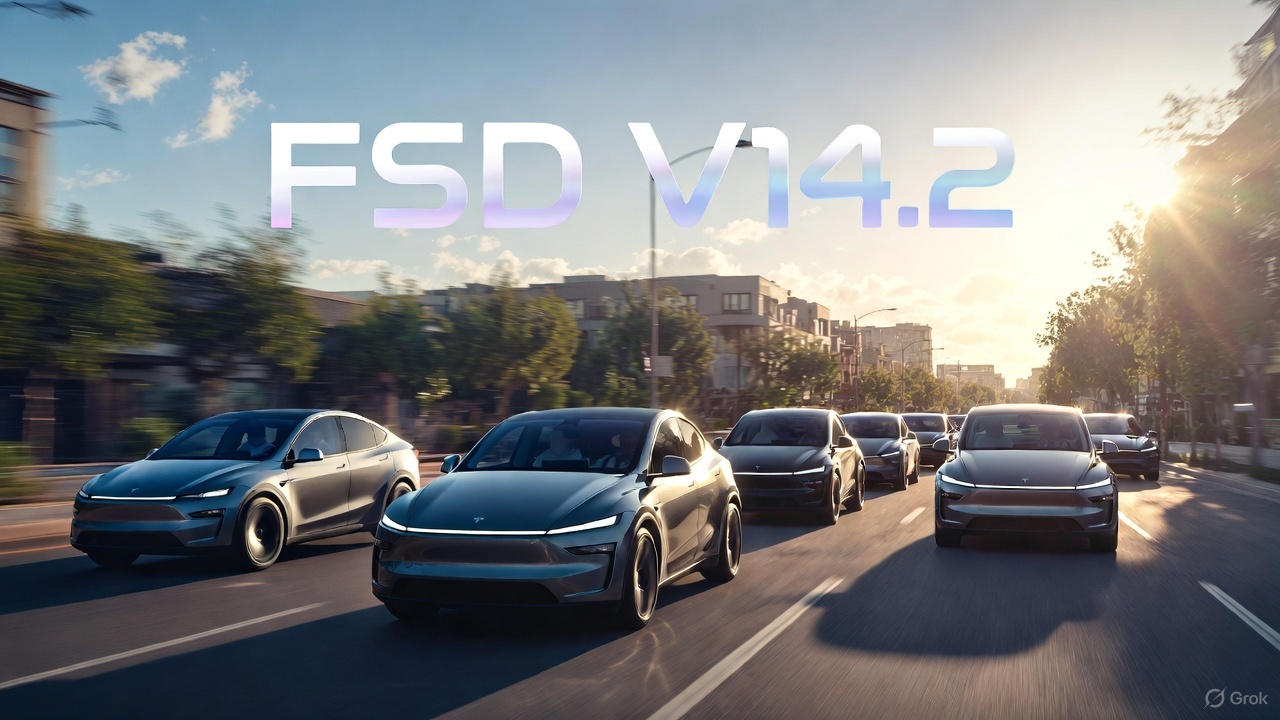
Tesla has begun rolling out Full Self-Driving (Supervised) V14.2, and with this, the wide release of the system could very well begin.
The update introduces a new high-resolution vision encoder, expanded emergency-vehicle handling, smarter routing, new parking options, and more refined driving behavior, among other improvements.
FSD V14.2 improvements
FSD (Supervised) V14.2’s release notes highlight a fully upgraded neural-network vision encoder capable of reading higher-resolution features, giving the system improved awareness of emergency vehicles, road obstacles, and even human gestures. Tesla also expanded its emergency-vehicle protocols, adding controlled pull-overs and yielding behavior for police cars, fire trucks, and ambulances, among others.
A deeper integration of navigation and routing into the vision network now allows the system to respond to blocked roads or detours in real time. The update also enhances decision-making in several complex scenarios, including unprotected turns, lane changes, vehicle cut-ins, and interactions with school buses. All in all, these improvements should help FSD (Supervised) V14.2 perform in a very smooth and comfortable manner.
Elon Musk’s predicted wide release
The significance of V14.2 grows when paired with Elon Musk’s comments from October. While responding to FSD tester AI DRIVR, who praised V14.1.2 for fixing “95% of indecisive lane changes and braking” and who noted that it was time for FSD to go on wide release, Musk stated that “14.2 for widespread use.”
FSD V14 has so far received a substantial amount of positive reviews from Tesla owners, many of whom have stated that the system now drives better than some human drivers as it is confident, cautious, and considerate at the same time. With V14.2 now rolling out, it remains to be seen if the update also makes it to the company’s wide FSD fleet, which is still populated by a large number of HW3 vehicles.
News
Tesla FSD V14.2 starts rolling out to initial batch of vehicles
It would likely only be a matter of time before FSD V14.2 videos are posted and shared on social media.
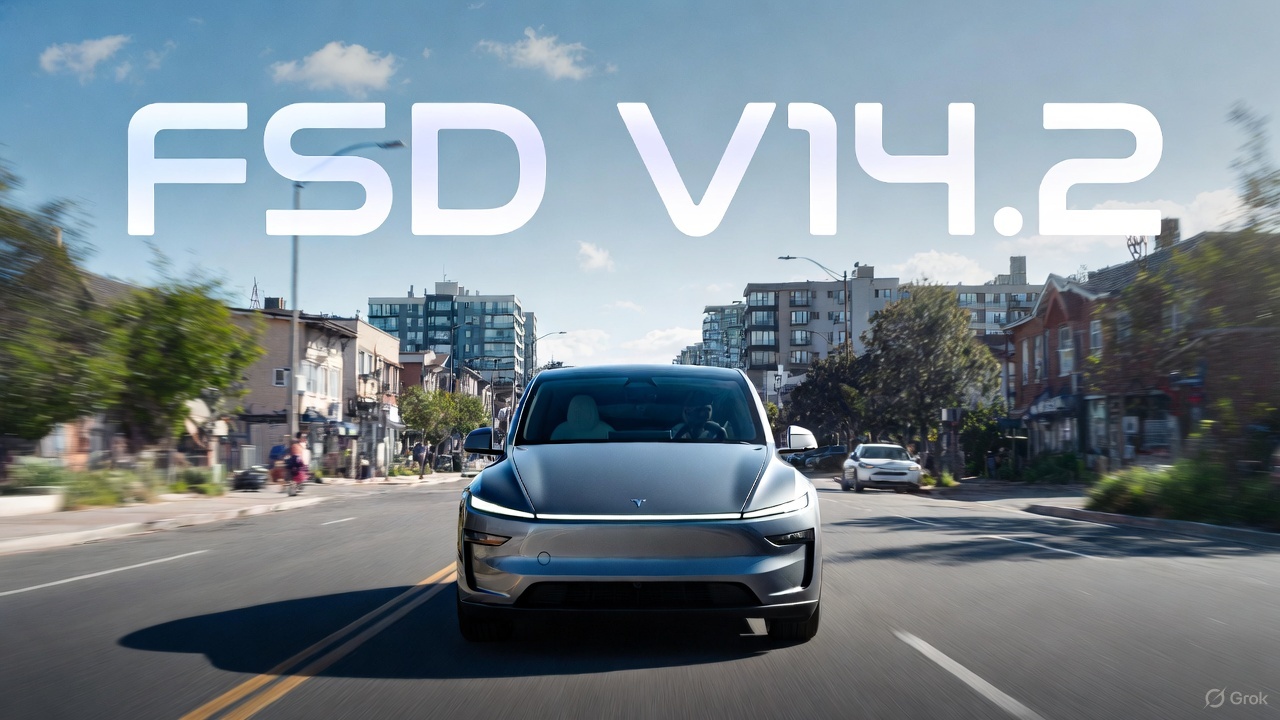
Tesla has begun pushing Full Self-Driving (Supervised) v14.2 to its initial batch of vehicles. The update was initially observed by Tesla owners and veteran FSD users on social media platform X on Friday.
So far, reports of the update have been shared by Model Y owners in California whose vehicles are equipped with the company’s AI4 hardware, though it would not be surprising if more Tesla owners across the country receive the update as well.
Based on the release notes of the update, key improvements in FSD V14.2 include a revamped neural network for better detection of emergency vehicles, obstacles, and human gestures, as well as options to select arrival spots.
It would likely only be a matter of time before FSD V14.2 videos are posted and shared on social media.
Following are the release notes of FSD (Supervised) V14.2, as shared on X by longtime FSD tester Whole Mars Catalog.
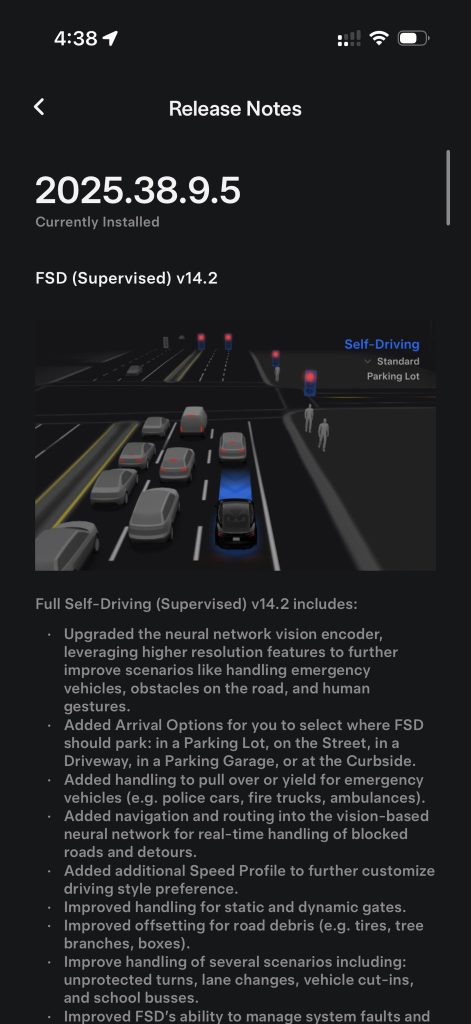
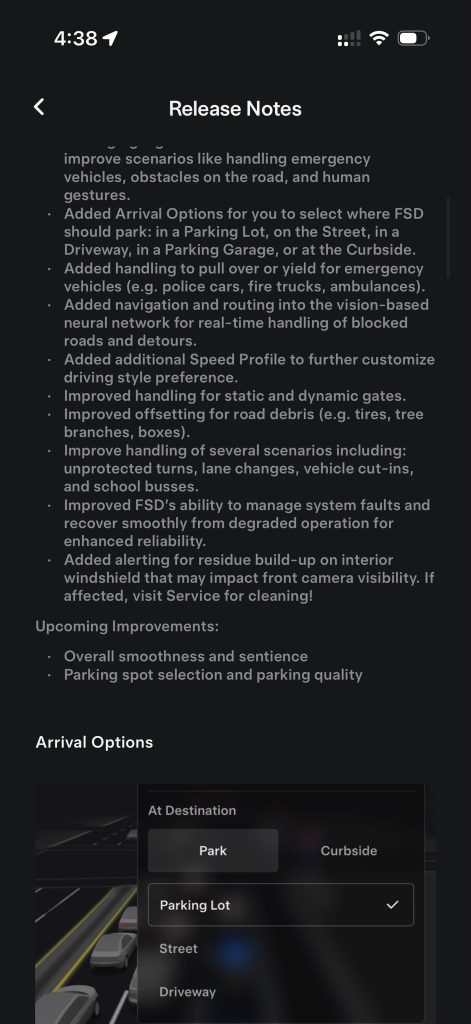
Release Notes
2025.38.9.5
Currently Installed
FSD (Supervised) v14.2
Full Self-Driving (Supervised) v14.2 includes:
- Upgraded the neural network vision encoder, leveraging higher resolution features to further improve scenarios like handling emergency vehicles, obstacles on the road, and human gestures.
- Added Arrival Options for you to select where FSD should park: in a Parking Lot, on the Street, in a Driveway, in a Parking Garage, or at the Curbside.
- Added handling to pull over or yield for emergency vehicles (e.g. police cars, fire trucks, ambulances.
- Added navigation and routing into the vision-based neural network for real-time handling of blocked roads and detours.
- Added additional Speed Profile to further customize driving style preference.
- Improved handling for static and dynamic gates.
- Improved offsetting for road debris (e.g. tires, tree branches, boxes).
- Improve handling of several scenarios including: unprotected turns, lane changes, vehicle cut-ins, and school busses.
- Improved FSD’s ability to manage system faults and improve scenarios like handling emergency vehicles, obstacles on the road, and human gestures.
- Added Arrival Options for you to select where FSD should park: in a Parking Lot, on the Street, in a Driveway, in a Parking Garage, or at the Curbside.
- Added handling to pull over or yield for emergency vehicles (e.g. police cars, fire trucks, ambulances).
- Added navigation and routing into the vision-based neural network for real-time handling of blocked roads and detours.
- Added additional Speed Profile to further customize driving style preference.
- Improved handling for static and dynamic gates.
- Improved offsetting for road debris (e.g. tires, tree branches, boxes).
- Improve handling of several scenarios, including unprotected turns, lane changes, vehicle cut-ins, and school buses.
- Improved FSD’s ability to manage system faults and recover smoothly from degraded operation for enhanced reliability.
- Added alerting for residue build-up on interior windshield that may impact front camera visibility. If affected, visit Service for cleaning!
Upcoming Improvements:
- Overall smoothness and sentience
- Parking spot selection and parking quality
News
Tesla Model X lost 400 pounds thanks to these changes
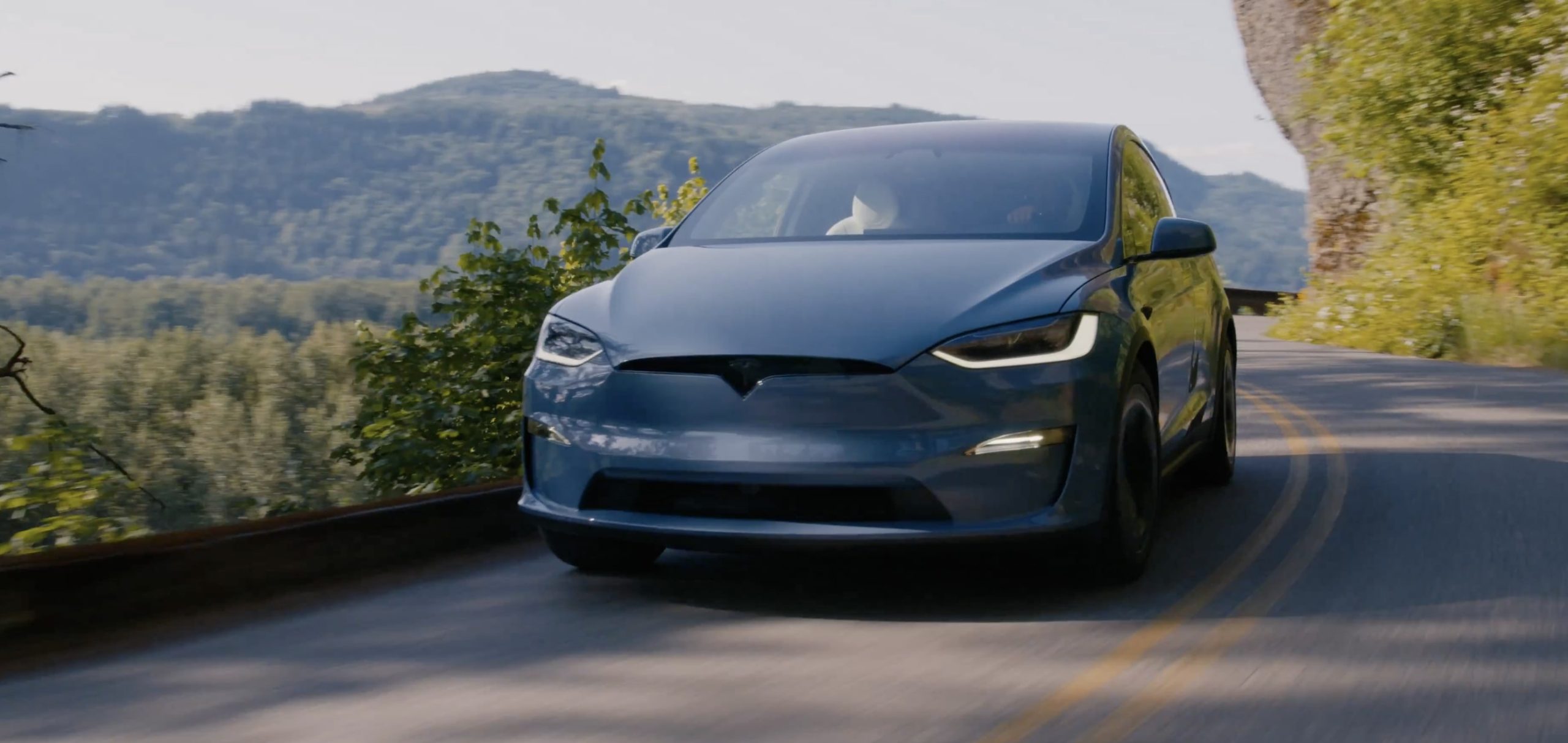
The Tesla Model X has always been one of the company’s most loved vehicles, despite its low sales figures, which can be attributed to its high price tag.
However, the Model X has been a signature item on Tesla’s menu of cars, most notably recognized by its Falcon Wing Doors, which are aware of its surroundings and open according to what’s around it.
But recent improvements to the Model X were looking slim to none, but it appears most of the fixes actually happened under the body, at least according to Tesla’s Vice President of Powertrain, Lars Moravy.
In a recent interview with Car and Driver, Moravy detailed all of the changes to the 2026 iteration of the vehicle, which was about 400 pounds lighter than it was originally. The biggest change is a modification with the rear motor, switching from an induction-type motor to a permanent-magnet design and optimizing the half-shafts, which shed about 100 pounds.
Tesla also got “almost 80 pounds out of the interior bits and pieces,” which “included making parts thinner, different manufacturing process choices, and incorporating airbag-deployment requirements into the headliner fabric,” the report said.
Additionally, the standard five-passenger, bench seat configuration saved 50 pounds by ditching pedestal mounting. This also helped with practicality, as it helped the seat fold flat. Engineers at Tesla also saved 44 pounds from the high-voltage wiring through optimizing the wiring from the charge-port DC/DC converter and switching from copper to aluminum wiring.
Tesla makes a decision on the future of its flagship Model S and Model X
Tesla also simplified the cooling system by reducing the number of radiators. It also incorporated Nürburgring cooling requirements for the Plaid variant, which saved nearly 30 pounds.
Many Tesla fans will be familiar with the megacastings, manufactured in-house by presses from IDRA, which also saves more than 20 pounds and boosts torsional stiffness by around 10 percent. Tweaks to the suspension also saved 10 pounds.
People were truly disappointed with what Tesla did with the Model S and Model X, arguing that the cars needed a more severe exterior overhaul, which might be true. However, Tesla really did a lot to reduce the weight of the vehicle, which helps increase range and efficiency. According to Grok, every 200 pounds removed adds between 7 and 15 percent to range estimations.
This makes sense considering the range estimations both increased by 7 percent from the Model X’s 2025 configuration to the 2026 builds. Range increased on the All-Wheel-Drive trim from 329 miles to 352 miles, while the Plaid went from 314 miles to 335 miles.
